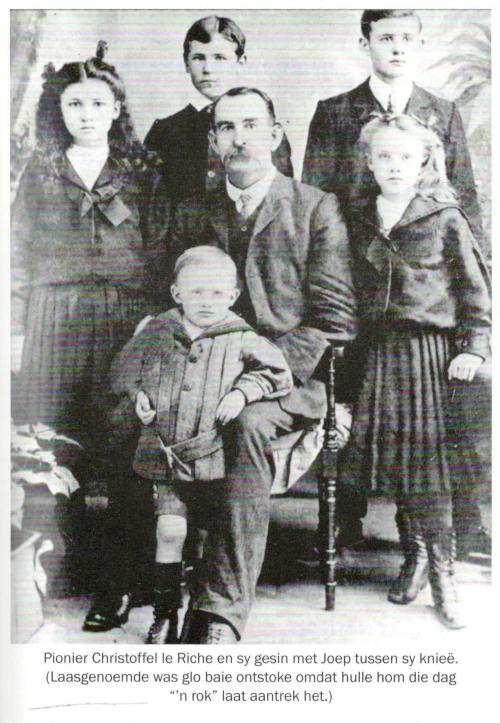Le Riche Family
The 'original' conservation family of the Kgalagadi
Le Riche Family - three generations serving the Kalahari Gemsbok NP
The Kalahari game reserve has an interesting history. The Le Riche family has a long relationship with the area. In 1899, the pioneering Christoffel le Riche and his wife Martie moved just south of the current South African section of the reserve. In 1899 their first son Johannes and in 1904 their second son Joseph (later known as Joep) were born.
After considerable excitement but very little action during the first world war – this part of the Kalahari borders what was then German South West Africa - the area was proclaimed as a National Park in 1931. Johannes le Riche, the son of Stoffel and Martie, became the first game warden. Le Riche and his assistant – Gert Januarie – patrolled the area on horseback. This was not the safest activity in the world because although lions tend to leave humans alone, horses are regarded as fair game. Staying on a horse in full flight from a lion is certainly not something most people would want to attempt! Nevertheless, although they had many adventures, they survived for three years. Their deaths were extraordinary. The Kalahari Gemsbok National Park – as it was then known – is bounded by two rivers the Auob and the Nossob. Auob means ‘bitter water’ and Nossob means ‘dark clay’. The river beds stretch between the sand dunes and calcrete ridges and are natural migration paths for animals, and now roadways for visitors. What they don’t do often is flow with water. That happens about every fifty to a hundred years. Subterranean water flows below the surface supporting the acacia trees and other vegetation along the verges. But in 1934 they came down in flood. Johannes and Gert didn’t drown, but they succumbed to malaria in the heart of the Kalahari desert. Johannes’ brother Joep agreed to become temporary warden. He stayed for another 36 years! One of his many achievements was to recommission the water holes which had been drilled during the war, thus supplying water points in the beds of the Auob (bitter or not) and Nossob for the animals and so encouraging them to stay in the game reserve. Joep met many interesting characters and had many tales to tell. In 1938 a large area across the border in Botswana (which was then called Bechuanaland) was proclaimed a game reserve by Britain and became the Gemsbok National Park. Joep was put in charge of it also. The Mabuasehube game reserve was added in 1971."Joep le Riche die Gemsbokpark en die Gemsbokpark was Joep le Riche" - Die Verhaal van die Kalahari-gemsbokpark. GEE MY 'N MAN. Hannes Kloppers
Joep's son, Stoffel, succeeded him but died early of heart failure. The batton was taken up by Elias Le Riche, Stoffels younger brother, until his retirement in 20?? completing three generations and over 60 years of service by the Le Riche family. Despite strained relations between Botswana and South Africa after 1966 when Botswana became an independent country, in 1992 the two countries agreed to plan the management of the two areas jointly. After the democratic elections in South Africa, the two countries agreed to manage the area – now over 38,000 km in total - as a single unit, leading to the creation of the Kgalagadi Transfrontier Park in 2000.PUBLICATIONS
Elias Le Riche later co-authored a book called The Kalahari and its plants sharing decades of knowledge and experience with the world.
ARTICLES OF INTEREST
The history and development of Kalahari Gemsbok NP from 1931 to 1981, P Van Vyk and Elias Le Riche
Natural & Cultural History of the Kgalagadi National Park from SANParks.org
Go back to: Families in conservation


.jpg)

